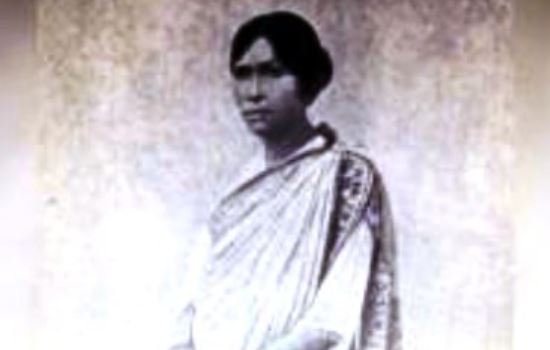Manali Chotalia
A 19th-century lawyer – Sudhanshubala Hazra, daughter of a lawyer and a leader, raised her voice against the discrimination faced by her while trying to enrol as a female lawyer in India. Even after failing many times, nothing held her back from trying again and making a way for herself and many more women in India.
Background:
Hazra was born to Ambika Charan Hazra, a Bengali Christian. She and her sister were adopted after her father’s death by Madhusudan Das, who was Ambika’s friend. Madhusudan Das, being a lawyer and a leading spokesman for socially and economically backward, helped in the upliftment of women.
Gandhi’s support:
Madhusudan Das was the route through which Gandhi came to know about poverty and superstition through which India was affected. He wanted to end the attitude which the Brahmins and the other economic exploiters had regarding their supremacy. Madhusudan Das was a role model for him – ‘An Oriya of great Prominence.’ Gandhi also helped Madhusudan Das in his effort for the betterment of women.
Being impressed by Madhusudan’s efforts, Gandhi Ji himself opened a tannery in the Sabarmati Ashram.
Career:
Hazra started attending classes to earn a law degree while she was working as a teacher and then becoming the headmistress at Ravenshaw Girl’s School in Cuttack. She tried to sit for the Bachelor of Law exam at Calcutta University in 1917 which had already allowed two women to sit for the examination but was denied to do so by the Calcutta and Patna University.
In 1920, she qualified for the exam at Calcutta University, which permitted her in 1919.
Even after qualifying for the exam, she had to struggle and fight a lot to get herself enrolled as a lawyer under the Legal Practitioners Act 1879, which did not recognize women as “persons” to be enrolled as lawyers at that time and also did not allow entry of women into the profession of law.
She still took the stand and gave Cornelia Sorabji as an example to get herself enrolled. She also cited the British Sex Disqualification Removal Act 1919 to get the benefit but, in ‘In Re Miss Sudhansu Bala Hazra,’ the Patna High Court ruled that they were bounded by the Calcutta High Court’s reasoning regarding men as “persons” and barred her from enrolling.
On the Patna High Court bench were Chief Justice Dawson Miller, Justice B. Mullick, and Justice Jwala Prasad.
Hazra started a campaign by filing a petition in the Privy Council with the help of her father, sister, and Hari Singh Gour, a lawyer, and writer. He being a member of the Central Legislative Assembly introduced a Bill to remove this discrimination. He stated various sections that needed the required change for bringing equality and justice.
Justice being awarded was still partial as it gave Hazra the right to the legal profession and not to be enrolled as a pleader.
“Section 6 of the Act empowered the High Court to make rules consistent with the Act as to the qualifications, admissions, and certificates of proper persons to be Pleaders of Subordinate Courts,” stated Justice Jwala Prasad in the hearing.
Thus, the Legal Practitioners (Women) Act was passed in 1923, and Hazra was able to enrol as a lawyer in Patna.
Hazra opened the golden path of change for women in the 19th century, which initially was a small one but has built itself as a much wider one.
References:
Sudhanshu Bala Hazra vs. Unknown 64 Indian cases 636, Judgement: 28 November, 1921.
[embeddoc url=”https://www.lawinsider.in/wp-content/uploads/2020/12/094_Sudhansu-Bala-Hazra-590-593.pdf” download=”all” viewer=”google”]
